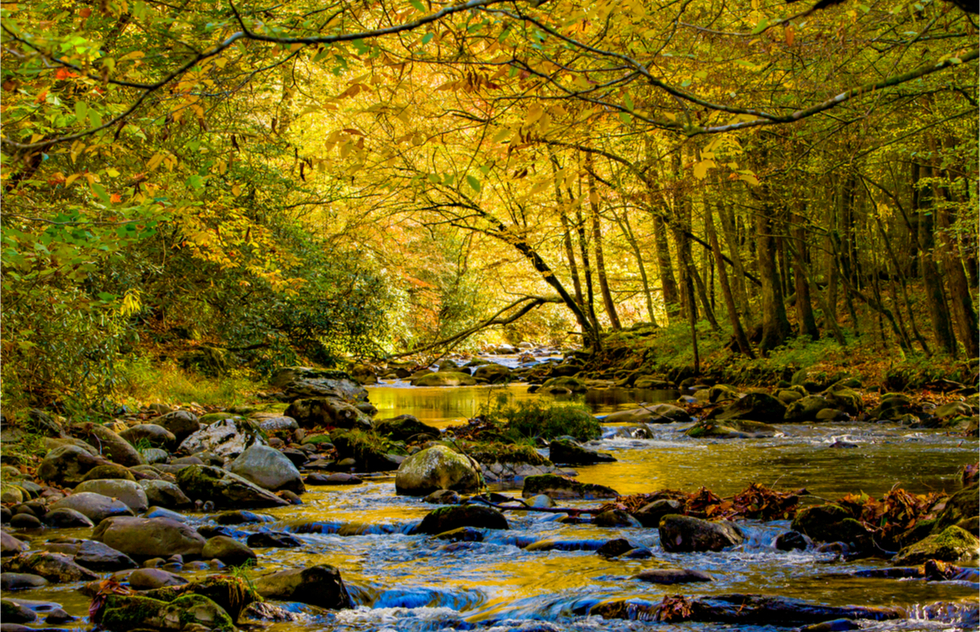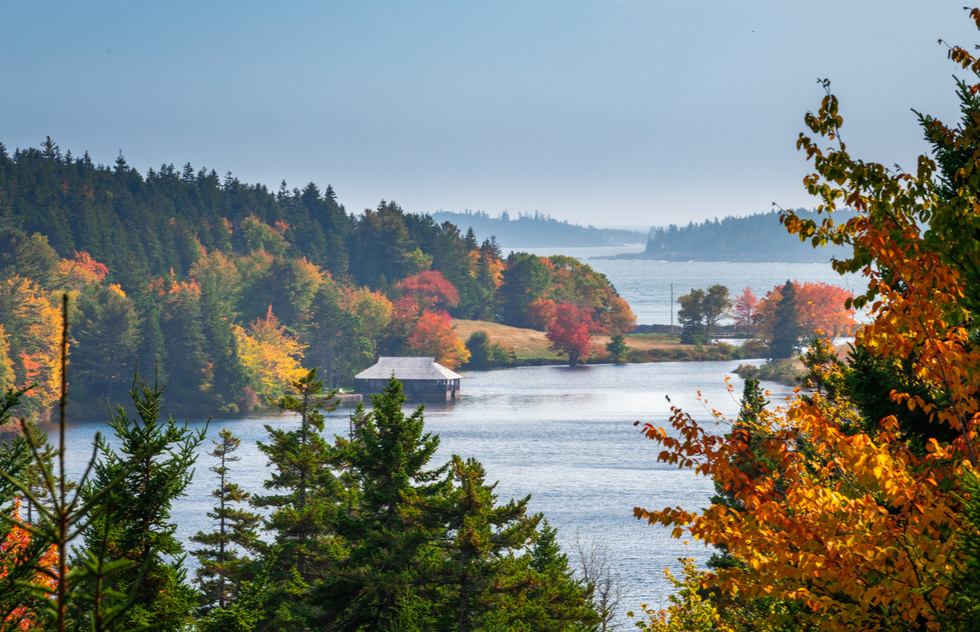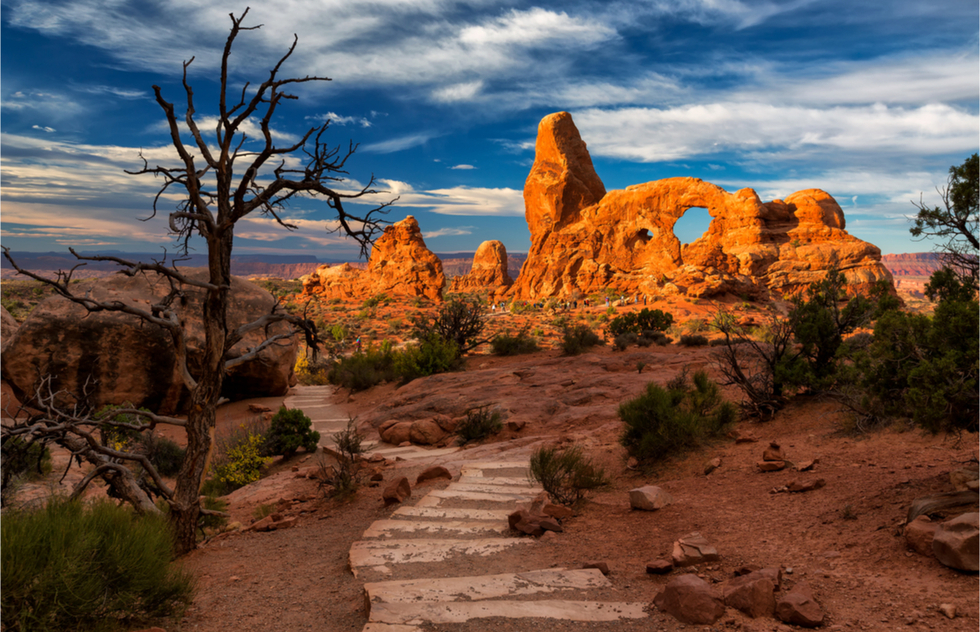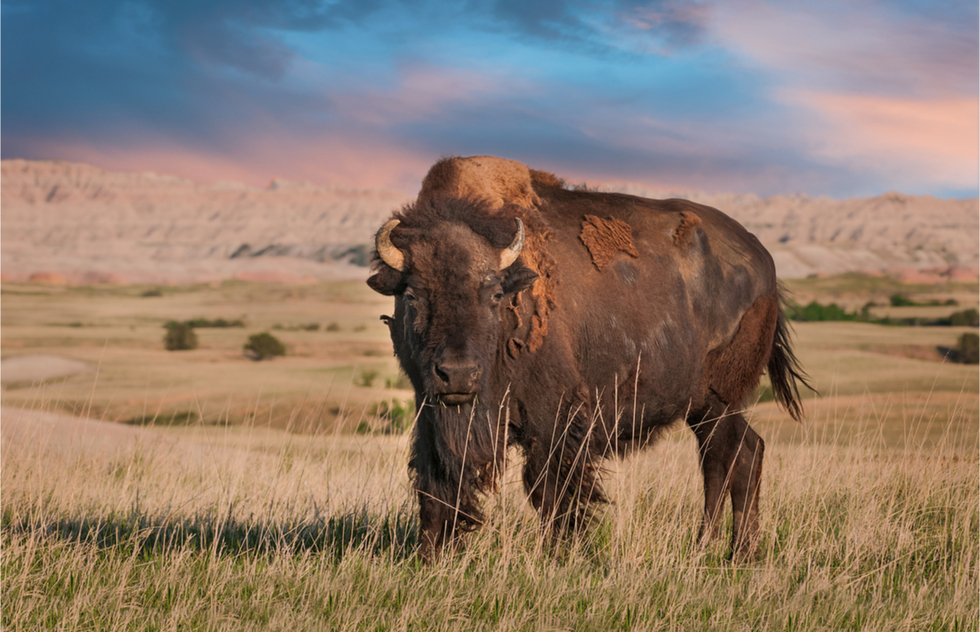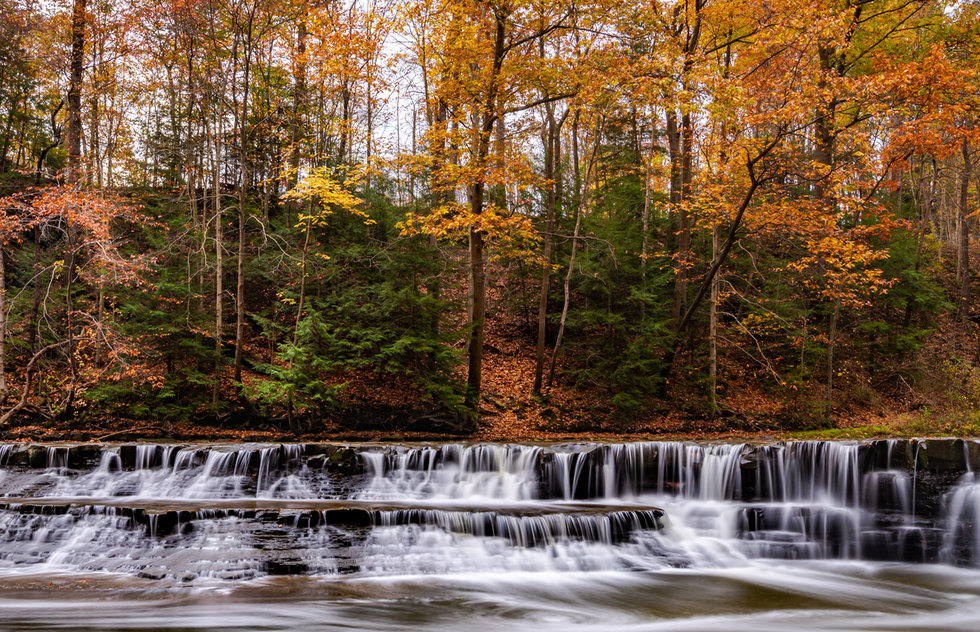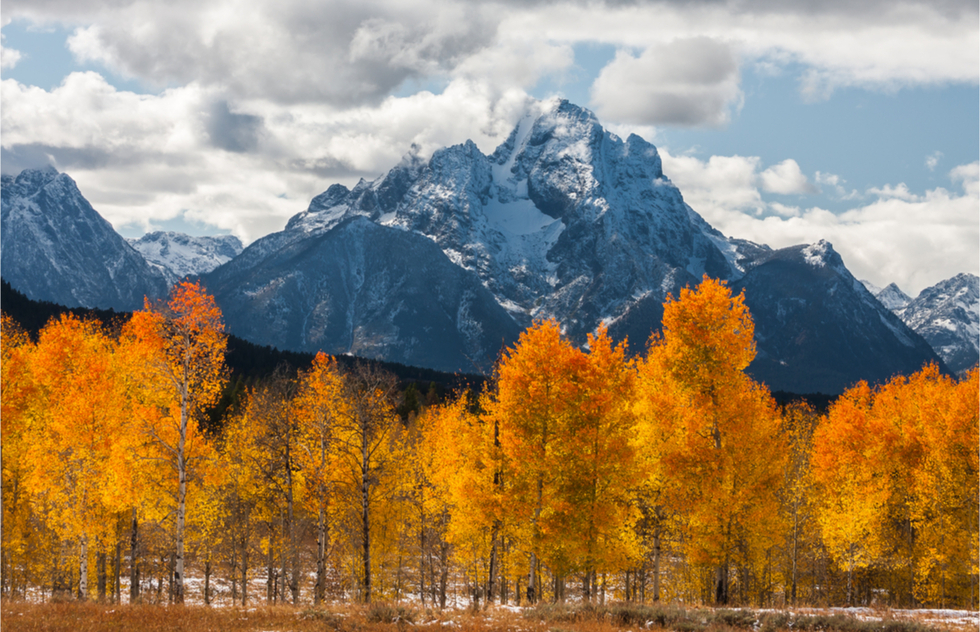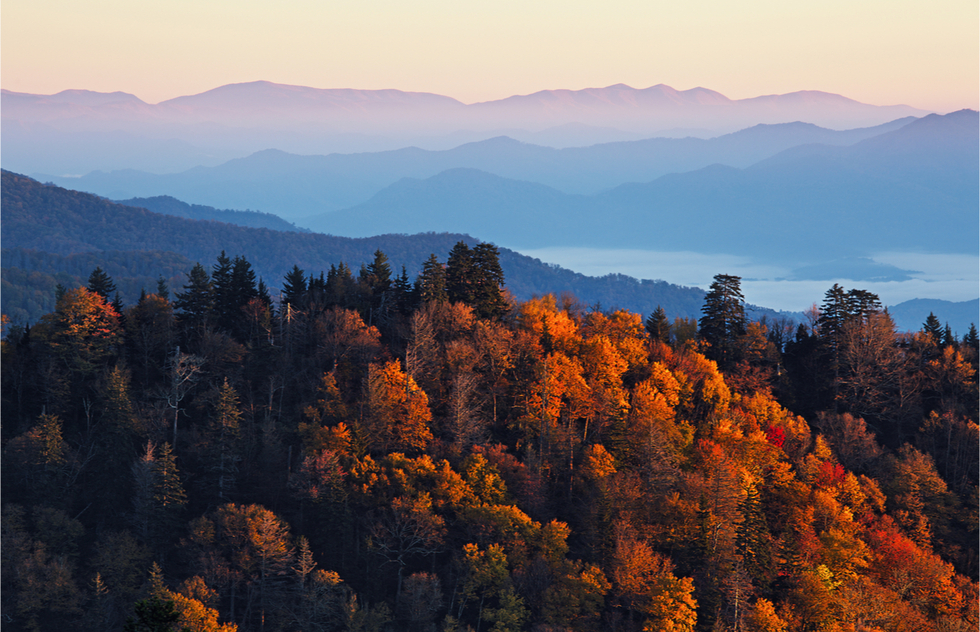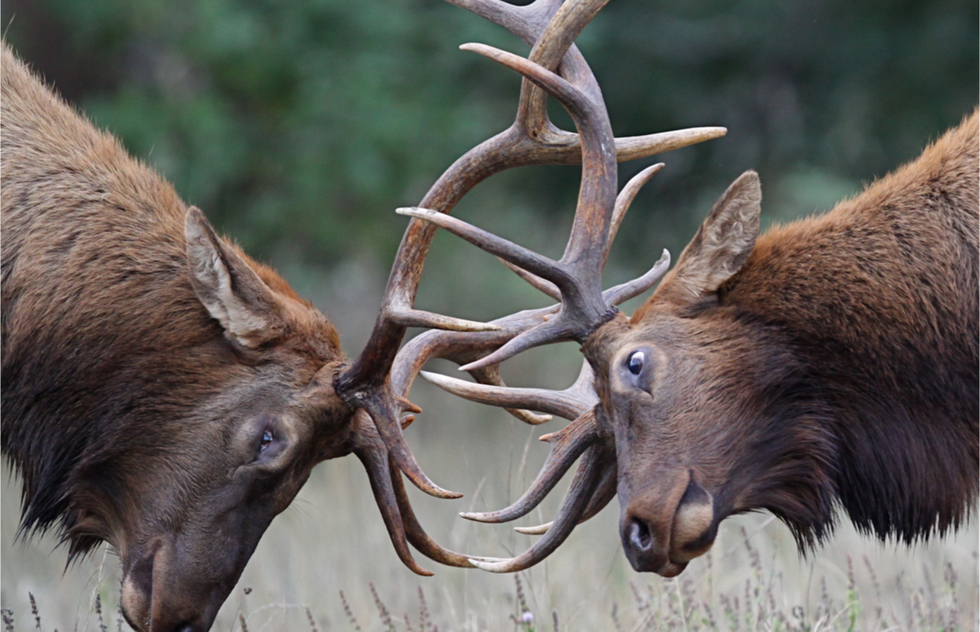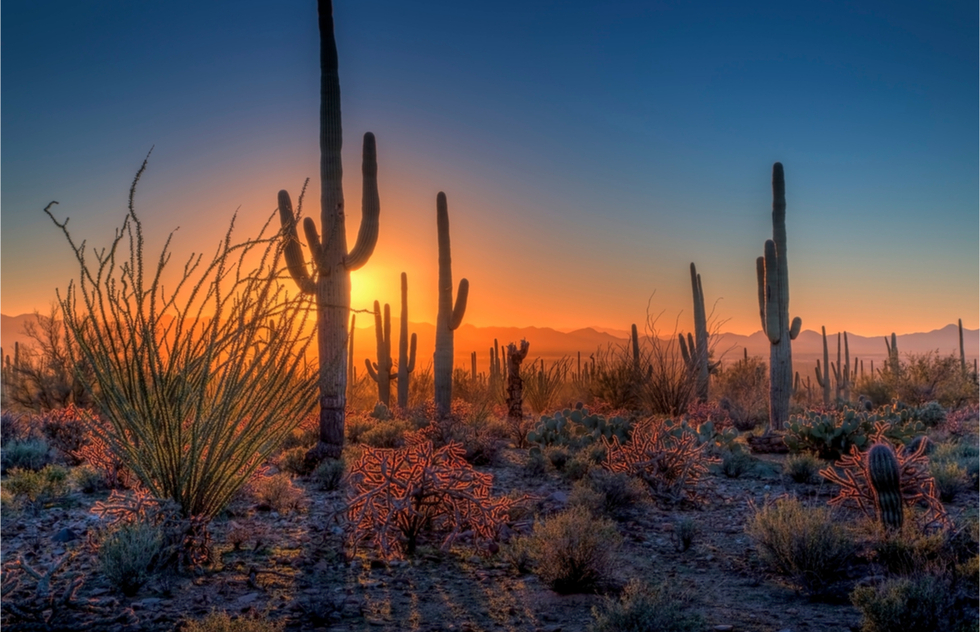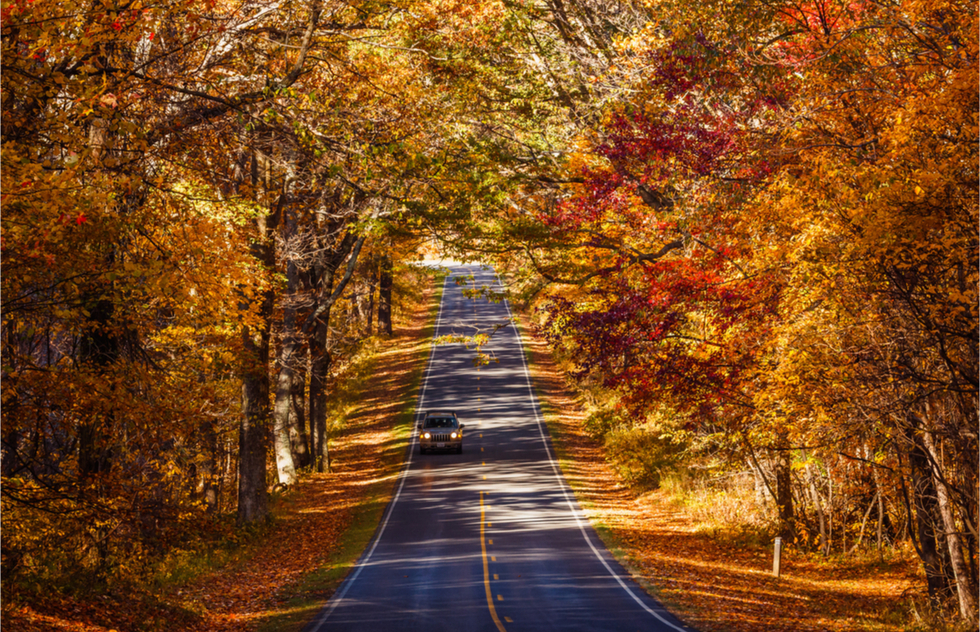The Best National Parks to Visit in the Fall
By Pauline FrommerUpdated July 11, 2024
Autumn can be an exuberant season in U.S. national parks. In some of them, the mating calls of elk fill the air. In others, the turning of the leaves gives landscapes a flamboyant makeover. Still others are aflutter with the annual butterfly migration or are within reach of local seasonal festivals. And in almost all of the national parks, summer crowds evaporate when the weather turns brisker.
Which to pick? Read on for our top recommendations for autumn travels.
Pictured above: Little River in Tennessee's Great Smoky Mountains National Park
Autumn starts early this far north, so you can have a wonderfully colorful time as soon as the second and third week of October. Then you can chase the changing colors south and wend your way through the rest of New England, keeping up with the peak razzle-dazzle of the trees.
Or you might just want to stay in Acadia, a name that comes from the Latin word for, appropriately, heaven on earth. Beyond leaf-peeping, fall visitors can take part in whale-watching excursions, go beachcombing, listen to the roar of the surf as it rushes through Thunder Hole, hike nature trails, visit one of the park’s well-curated museums, photograph lighthouses, gorge on local lobster, and much more.
Related: How to Plan the Perfect Vacation at Acadia National Park
The powerful dance of wind, rain, and red sandstone over many eons created the 2,000-plus fantastical rock formations at Arches National Park—but those conditions did not leave much shade or shelter. Visits in 100-degree summer or 10-degree winter weather can be miserable, but autumn sees temperate conditions, and, just as important, smaller crowds than summer.
Aesthetically pleasing erosion is the big lure, stirring the soul with unusually balanced rocks, fins, spires, and arches. But the park and its surrounding area also have excellent mountain biking, canyoneering, rock climbing, and hiking. Many people who travel here turn their trip into a national park twofer, adding on nearby Canyonlands, located a 30-minute drive south. This smaller, less touristed doppelgänger of the Grand Canyon has its own remarkable petroglyphs and rock scrambles.
Only a few centuries ago, over half the North American continent was carpeted in the same type of mixed grass prairie you'll encounter at Badlands National Park. The park retains the largest intact prairie of any in the National Park Service system, providing an enduring home to the animals that keep this type of ecosystem healthy: bison (pictured above), prairie dogs, ferrets, pronghorn, coyotes, golden eagles, and others. Many of those critters have been successfully reintroduced here over the years, in some cases reviving populations that were on the brink of extinction.
In the summer months, violent thunderstorms and blazing temperatures can make touring the Badlands challenging, but come fall, the weather mellows to the 60s and 70s Fahrenheit during the day (chillier at night). Some of the grasses yellow in autumn too, making it easier to spot wildlife, and rewarding photographers with gold-hued landscapes.
Nearby in the historic town of Deadwood, both Oktoberfest and Halloween are celebrated—locally, the latter is called "Deadweird." The area is also known for its spelunking, fossil hunting, cycling opportunities (the George S. Mickelson Trail first among them), and, of course, Mount Rushmore, a 90-minute drive to the west.
Big Bend is a birder's paradise, thanks to the important migratory routes that go right through the heart of the park, which hosts more bird species than any other. There's certainly room for them—the park is larger than Rhode Island.
Astronomers come to stargaze. The park, which is far from any city, has some of the darkest skies in the U.S., with desert conditions inhibiting water vapors and improving viewing.
Paleontologists, meanwhile, are drawn by a fossil record that stretches back some 130 million years. Among prize finds are the bones from a 40-foot-long, 83-million-year-old “alligatoroid” and a 7-foot-long skull from a species of horned dinosaur named the Bravoceratops, unearthed in 2013.
Another fun fact: Big Bend is one of only six parks in the National Park Service system to share an international border—in this case, with Mexico.
In the winter, this park tends to flood, and in summer, the humidity and heat can get unbearable. But autumn is that just-right Goldilocks time in South Carolina’s only national park. Congaree harbors the biggest old-growth, bottomland hardwood forest left in the Southeast. Fifteen trees growing here are the largest known specimens of their kind on the planet—including loblolly pine, cherrybark oak, American elm, sweetgum, and swamp chestnut oak—all of which are over 130 feet tall. Sheltering in and among the trees are bobcats, alligators, river otters, and deer.
Canoeing, kayaking, fishing, and hiking are the major fall activities within Congaree. Not far away, you'll find important historic sites (like Fort Sumter in Charleston), and cultural gems like the Gullah Geechee Cultural Heritage Corridor, which brings to life the foodways, arts and crafts, language, and spiritual traditions of the enslaved people brought to this region from West and Southern Africa.
In the 1960s, the Cuyahoga River was so polluted it caught fire—several times. But between 1987 and 2011, local authorities, engineers, and ecologists were able to turn the situation around, and today the river is the centerpiece of this splendid national park. Anglers can catch some 65 species of fish in the river now, and paddlers get out on the waters. In the autumn season, the beavers in these parts put on quite the show, building impressive fortresses before the weather turns. The leaves, too, are pretty spectacular here in October.
Beyond the natural sights, what makes this park so intriguing are the remnants of the area’s industrial and mercantile past. It’s possible to explore the paths of obsolete shipping canals by bike and ride the Cuyahoga Valley Scenic Railroad, which was once a coal train.
Stretching across an area the size of Delaware, the Everglades, west of Miami, are not just a national park. The wetland is considered so important to the world’s ecology that it has been designated a UNESCO World Heritage Site and an international biosphere. Within the park's boundaries are mangroves, grass marshes, cypress swamps, pinelands, hardwood hammocks, and all of the flying, swimming, crawling creatures that make homes in these types of ecosystems.
Though you can visit year-round, fall is the best season. Summer’s humidity will have abated by then and it will be less rainy, especially in November, the start of Florida's dry season. That means fewer biting insects but still lots of wildlife-viewing opportunities. Plus, baby alligators are born in the autumn, and they’re awfully cute—in a leathery sort of way. The only downside to fall visits can be the crowds.
The best way to explore the Everglades is to take guided nature tours by boat or to go birdwatching, paddling, or hiking.
It may seem odd to plan an autumn visit to a place known for evergreen forests, but Grand Teton has some spectacular golden aspen and cottonwood groves, as well as the National Elk Refuge, a hotbed of amorous activity (and bugling mating calls) that only happens in the fall.
Some 200 miles of trails snake through this vertiginous park, where jagged peaks reach 7,000 feet in height—the youngest, and many would say handsomest, mountains of the Rockies. Lots of outdoor adventures are doable, though some passes become harder to navigate come November. The park is also blessed with a number of fishable rivers and lakes, historic sites, and slopes you can climb. About 10 miles north is the southern entrance of Yellowstone National Park; most visitors hit both.
Possibly the U.S. national park that is most associated with fall foliage, this two-state wonder is blessed with more than a hundred species of native trees—most U.S. parks have fewer than 20—that flourish in one of the oldest old-growth hardwood forests east of the Mississippi River.
A mélange of altitude, year-round rainfall, low humidity, and temperate temperatures makes for unusually vibrant leaf displays come autumn. When they're not ogling those, fall visitors make pilgrimages to the 90-plus historic structures inside the park and go horseback riding, boating, fishing, hiking, and cycling. In 1983, UNESCO named Great Smoky Mountains National Park to the World Heritage list for its head-spinning biodiversity—there are around 10,000 species of flora and fauna in the park, and about 1,000 of those are found nowhere else.
The elk, moose, and mule deer are all in a rut come fall—and that’s great news for human visitors. The bugling, the shifting harems, the mating rituals, the battles over love—it’s as dramatic as an episode of The Real Housewives. The spectacle is made even better because these majestic beasts follow their hormonal impulses against a backdrop of burnt umbers, deep reds, popping orange, and brownish gold. Moraine Park, the area’s largest open space, is a favorite grazing spot for wildlife; a 5.5-mile trail loops all the way around the meadow.
Because Rocky Mountain has one of the highest average elevations of any national park in the United States, you’ll need to come here early-ish to see the changing leaves—aim for late September and early October. Most visitors also set aside some time to tour the Stanley Hotel (the inspiration for Stephen King’s The Shining) and to check out the art galleries, boutiques, and breweries of charming Estes Park, the park’s gateway town.
Named for the USA's tallest cactus (which can reach up to 50 feet), this desert park is split into two parts by lively Tucson. That seems appropriate: The park is as notable for its long human habitation as for its spectacular natural wonders.
The Sonoran desert people (also known as the Hohokam) settled here in 2100 B.C. and built some of the earliest canal irrigation systems on the continent. The park is pitted with their ruins and tagged with petroglyphs.
The temperatures drop to an average of 70 degrees Fahrenheit in October, making that month and November ideal for comfortable visits. It’s also fun to drop by Tucson in the fall, thanks to its mix of Mexican and American seasonal celebrations involving pumpkin patches, corn mazes, Halloween activities, and All Souls processions.
Shenandoah National Park encompasses a variety of elevations, so the leaves in low areas can still be green while the color is peaking at higher altitudes. The fall foliage is so popular here that the National Park Service has set up several ways for would-be visitors to track the colors from afar via social media and daily livestreams. Note that the in-person crowds may be large this time of year.
Is all the fuss worth it? In a word, yes. With its famous mountain ridge highway (Skyline Drive, pictured above), forested trails, and many waterfalls, Shenandoah is a beaut. The angling here is legendary (President Herbert Hoover kept a cabin for his periodic fishing trips). Ditto for the hiking and horseback riding.





